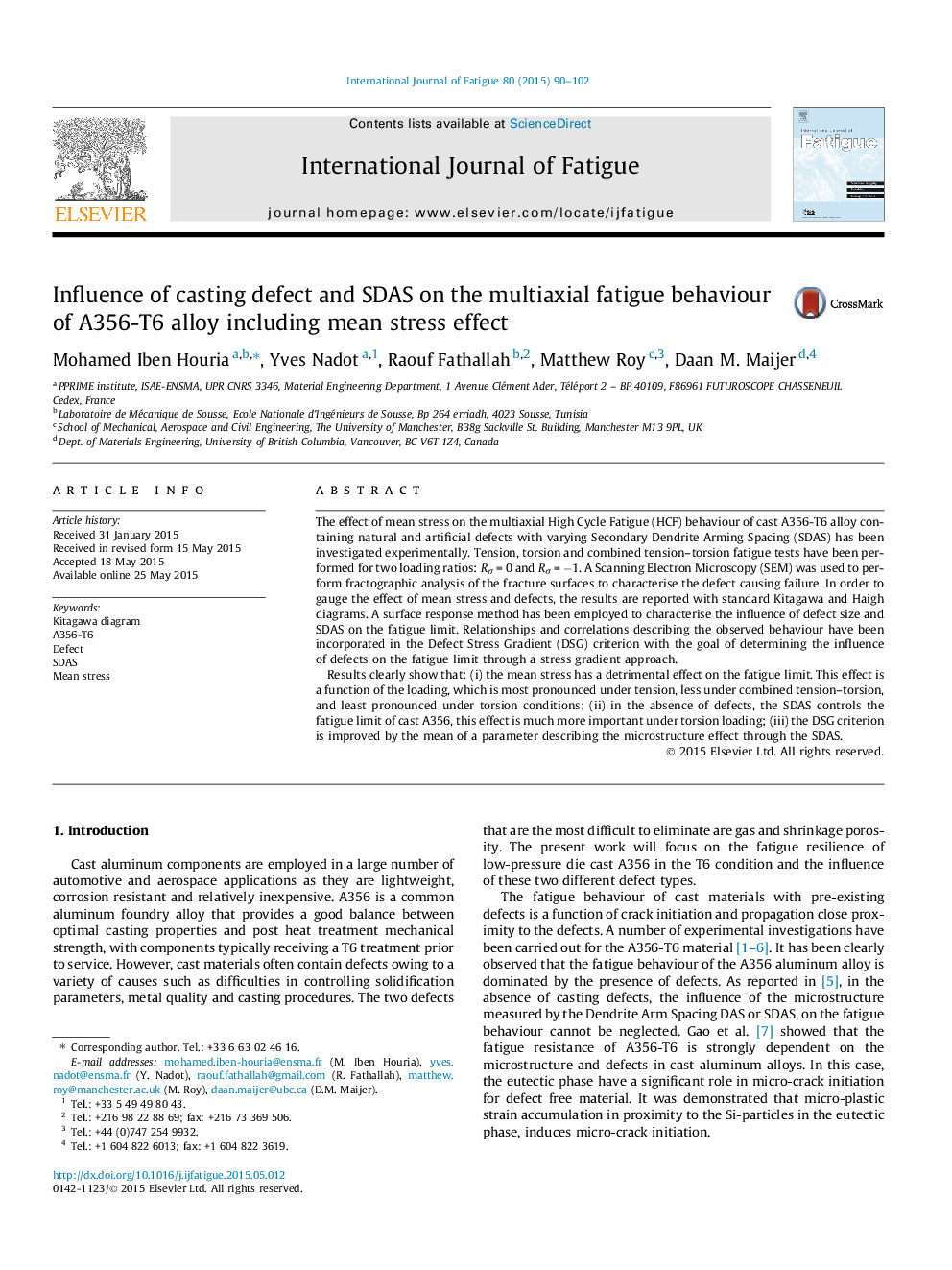| کد مقاله | کد نشریه | سال انتشار | مقاله انگلیسی | نسخه تمام متن |
|---|---|---|---|---|
| 776538 | 1463752 | 2015 | 13 صفحه PDF | دانلود رایگان |

• We studied the multiaxial High Cycle Fatigue (HCF) behaviour of cast A356-T6 alloy.
• We examine the effect of defect size and microstructure characterised by SDAS.
• We studied the effects of mean stress as well as the natural and artificial defects.
• We modified the DSG criterion to include the effect of SDAS and defect size.
The effect of mean stress on the multiaxial High Cycle Fatigue (HCF) behaviour of cast A356-T6 alloy containing natural and artificial defects with varying Secondary Dendrite Arming Spacing (SDAS) has been investigated experimentally. Tension, torsion and combined tension–torsion fatigue tests have been performed for two loading ratios: Rσ = 0 and Rσ = −1. A Scanning Electron Microscopy (SEM) was used to perform fractographic analysis of the fracture surfaces to characterise the defect causing failure. In order to gauge the effect of mean stress and defects, the results are reported with standard Kitagawa and Haigh diagrams. A surface response method has been employed to characterise the influence of defect size and SDAS on the fatigue limit. Relationships and correlations describing the observed behaviour have been incorporated in the Defect Stress Gradient (DSG) criterion with the goal of determining the influence of defects on the fatigue limit through a stress gradient approach.Results clearly show that: (i) the mean stress has a detrimental effect on the fatigue limit. This effect is a function of the loading, which is most pronounced under tension, less under combined tension–torsion, and least pronounced under torsion conditions; (ii) in the absence of defects, the SDAS controls the fatigue limit of cast A356, this effect is much more important under torsion loading; (iii) the DSG criterion is improved by the mean of a parameter describing the microstructure effect through the SDAS.
Journal: International Journal of Fatigue - Volume 80, November 2015, Pages 90–102